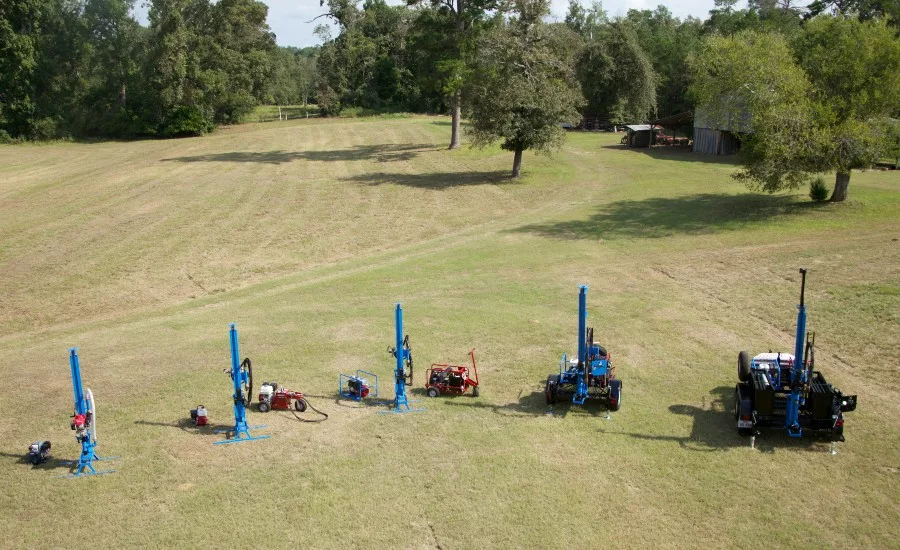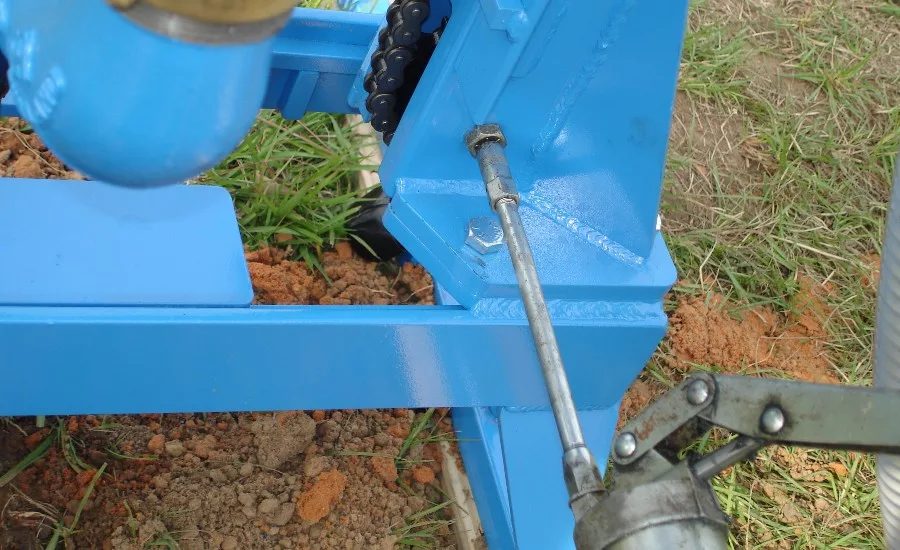Routine Maintenance for Portable Water Well Drills
From Grease Guns to Bolt Tightening, Don’t Skimp on Upkeep

Diligent maintenance can help drills large and small fulfill their expected service lives.
Source: Lone Star Drills

A grease gun can be a driller’s best friend when it comes to keeping components well lubricated and ready to work.
Source: Lone Star Drills
Skipping over daily maintenance is like rushing to a jobsite without wearing steel-toed boots. Routine maintenance ensures the readiness of any piece of equipment, such as a rotary drill, to go and achieve its full service life. A daily maintenance check on your portable water well drill doesn’t need to be lengthy or complicated. Follow these steps.
Check Grease Levels
Check grease levels first because that inspection guides around the drill’s major components, including the drawworks, drive chain, mast and water swivel. Check with the manufacturer to learn more about proper greasing, including the type to use, how much to use and more.
Inspect the Drive Train
While greasing the drawworks and mast, inspect the drive chain. Keep it tight and properly lubricated, since the drawworks relies on the drive chain to raise and lower the drill pipe in the borehole, much like the drill line on a larger drilling rig. Check the drive chain after about four hours of drilling and remove any slack, as necessary. A loose drive chain slaps against the drill’s mast while boring through overburden or rock formations.
Adjust the Tension
Processes for adjusting drill tension vary between manufacturers, and some design rotary drills with this type of maintenance in mind. For example, some manufacturers design rotary drills that make accessing the chain’s adjustment screw and locking nut as simple as removing a pin or loosening a single bolt. This significantly minimizes downtime. To adjust the tension, open the rotary drive assembly and swing the drivehead to the side to access an adjustment screw and locking nut. Hold the adjustment screw and loosen the locking nut. Then, tighten the adjustment nut until you remove nearly all the drive chain’s slack. There should be a little slack because it prevents the chain from getting stuck at the top of the mast, but not so much that it slaps against the mast. After getting rid of the slack, tighten the locking nut and secure the drive head into place.
Review Bolts, Plates and Pipes
Remember too that properly cleaning and storing drill pipes allows those pipes to achieve a full service life.
After inspecting and lubricating the main components, run through a daily checklist of bolts, plates and pipes. Ensure bolts are properly torqued according to the torque guide in the operator’s manual. Loose bolts can damage equipment or break off inside components, such as the J-latch. Keep slip plates clear of grease and soil to reduce the chance of rust.
Remember too that properly cleaning and storing drill pipes allows those pipes to achieve a full service life. After drilling each hole, clean both the pin and box threads with a wire brush to remove any dirt or grease residue. After completing the job, clean any soil from the pipe and replace the thread protector caps before storing it in a trailer.
To check out more of our columns, click here!
Be diligent about checking the rotary drill and completing daily maintenance to get the most out of the drill. And choose a reliable manufacturer to tackle any situations that fall outside of regular maintenance. For specific maintenance requirements for your drill, contact the manufacturer for additional guidance.
Looking for a reprint of this article?
From high-res PDFs to custom plaques, order your copy today!




